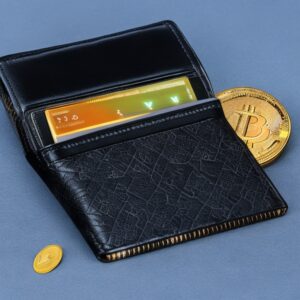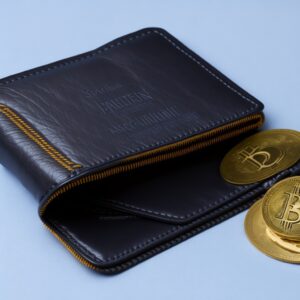Owning and managing digital assets through wallets has become increasingly popular and safeguarding your digital assets is paramount. But even the most cautious individuals can find themselves facing the disheartening scenario of a lost wallet. Whether it’s a forgotten password, a misplaced recovery phrase, or a technical glitch, the feeling of losing access to your hard-earned cryptocurrency can be unnerving.
 There are two main types of cryptocurrency wallets: hardware wallets and software wallets. Hardware wallets are tangible devices that you can hold in your hand. These wallets store your private keys offline, making them less susceptible to hacking or online threats. On the other hand, software wallets are digital applications or platforms that are stored online. They’re convenient and accessible from various devices, but they can potentially be more exposed to cyber risks.
There are two main types of cryptocurrency wallets: hardware wallets and software wallets. Hardware wallets are tangible devices that you can hold in your hand. These wallets store your private keys offline, making them less susceptible to hacking or online threats. On the other hand, software wallets are digital applications or platforms that are stored online. They’re convenient and accessible from various devices, but they can potentially be more exposed to cyber risks.
Losing access to your wallet due to a forgotten password is a common issue. It might sound simple, but it’s incredibly frustrating when you can’t remember the magic words that unlock your treasure trove of cryptocurrencies. Also typing the wrong password multiple times, misplacing important recovery codes, or accidentally deleting crucial files can lead to a digital disaster.
Hardware wallets are not immune to physical damage. Hardware failures can be heartbreaking, and if you haven’t backed up your wallet information, you may find yourself locked out.
Recovering a lost cryptocurrency wallet isn’t an impossible mission. It requires a blend of patience, resourcefulness, and a dash of technical know-how.
Stay Calm and Re-trace Your Steps
When you can’t access your cryptocurrency wallet, it’s easy to let anxiety take over. Your brain operates at its best when it’s not under the spell of stress. So take a deep breath and try to stay composed. This might seem counterintuitive, but a calm mind can be a treasure trove of forgotten memories and solutions.
Start by retracing your steps. Picture the moments leading up to the lockout. Did you make any changes recently? Did you update your password, security settings, or any other crucial details? Jogging your memory can unearth the key to regaining access.=
Think about the passwords you’ve used. They can be inspired by something personal or significant to you. It could be your pet’s name, a favorite movie, or even a combination of memorable numbers. Don’t underestimate the power of your own memory.
Consider any changes in your routine as well. Sometimes, access issues can arise from changes in IP addresses or other security measures. This information could be crucial when troubleshooting with customer support.
Check Your Records and Devices
Take a look at your records. This could include old passwords, recovery codes, or any notes you might have made. It’s the time to rummage through your old notebooks or digital notes. Your devices can hold vital clues too. A forgotten login might be saved on another device’s memory.
Check your devices – phones, tablets, computers, anything that might have been used to access your wallet. If your password was saved, you might just be able to access your wallet without going through a complicated recovery process.
If you’ve enabled two-factor authentication (2FA), your devices can be even more helpful. 2FA often involves receiving a code on your phone or email, which you then enter along with your password. If you’re locked out, check your email or text messages for any recent codes.
Check for Backup and Recovery Options
Most cryptocurrency wallets offer backup and recovery options that you might have set up when initially creating the wallet. These options might include seed phrases or recovery codes. A seed phrase is a series of words that act as a master key to your wallet. If you have this phrase recorded in a safe place, you’re in luck. Look for your wallet’s official documentation on how to use the seed phrase for recovery. This method is often the simplest way to regain access.
Some wallets offer recovery codes. These are typically provided during the wallet setup process. If you’ve stored these codes in a safe place, now’s the time to put them to use.
To recover using a recovery code, log in to your wallet and look for the recovery or backup section. Follow the prompts, enter your recovery code, and voilà—you might just be back in business.
Many wallet providers offer customer support specifically for situations like this. While this might involve a bit of back-and-forth to verify your identity, it’s often a reliable way to regain access.
Provide information that proves your ownership of the wallet. This might include transaction details, the email associated with your account, or any other account-specific information. Using official contact channels is vital to avoid falling for scams.
Seek Professional Help
Wallet recovery might require technical expertise beyond your reach. If your cryptocurrency holdings are substantial, it might be worth considering professional wallet recovery services. Professional wallet recovery services have the experience and resources to tackle these challenges. They can employ advanced techniques, including brute force attacks and other ingenious methods, to recover lost passwords or access to malfunctioning hardware wallets.
When you decide to seek professional help, the first step is to find a reputable service. Look for reviews, testimonials, and the service’s track record. Ensure that they have a transparent process and pricing structure. While professional help comes at a cost, consider it an investment in reclaiming your potentially substantial cryptocurrency holdings.
Upon engaging a professional recovery service, you’ll likely need to provide them with as much information as possible about your wallet and the circumstances of your lockout. This could include the type of wallet you’re using, any relevant transaction details, and any attempts you’ve made at recovery. The more information you can provide, the better equipped the professionals will be to assist you.
Be prepared for the process to take some time, depending on the complexity of the situation. Professional recovery is not a quick fix, but it’s effective if your cryptocurrency holdings are significant.
 Tips for Preventing Future Loss
Tips for Preventing Future Loss
A reliable password manager can securely store your wallet passwords and recovery phrases, reducing the risk of forgetting them.
If your wallet provides a recovery seed or private key, back it up securely offline. This will ensure you have a failsafe even if your device malfunctions.
Keep track of updates and changes to your wallet software. Sometimes, newer versions come with enhanced security features.
If your wallet offers a test recovery feature, use it. This will help you practice the recovery process and ensure you know exactly what to do if the need arises.
Consider using a multisignature wallet, which requires multiple private keys to access funds. This adds an extra layer of security and can prevent complete loss in case one key is lost.